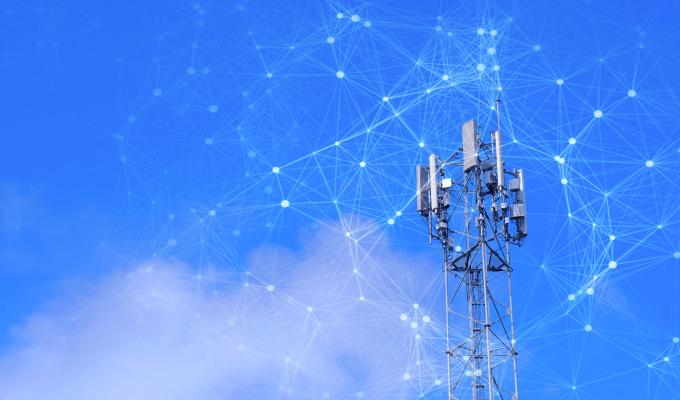The 3G Network Sunset has set. It started in February 2022 with cellular networks sunsetting their 3G services. As of that time frame, equipment that used a 3G network to communicate will no longer work. This includes telematics, cell phones, and ELD devices. Fleets that use these devices are supposed to upgrade to 4G if they want to continue using telematics, GPS, ELDs, and other devices.
Why did this happen? Mobile carriers desired to upgrade their networks to use the latest technologies (4G and 5G) as the older networks are based on late 1990-technology. Using 4G and 5G networks allows for higher bandwidth and data speeds, a more comprehensive coverage range, and improved network reliability. The timeframe for the 3G sunset for each mobile carrier is as follows:
- AT&T announced that it phased out its 3G network beginning in February 2022.
- Verizon will finish shutting down its 3G network by December 31, 2022.
- T-Mobile announced that it finished shutting down Sprint’s 3G CDMA network as of March 31, 2022, and Sprint’s 4G LTE network as of June 30, 2022.
- T-Mobile’s 2G GSM network is tentatively scheduled for shutdown on December 31, 2022.
Carriers license airwaves from the FCC. 3G technology uses less computing power than more modern devices, meaning it is less efficient than 4G or 5G. CTIA, a trade association representing the US wireless communications industry, says that each hertz of airwave can handle 23x the number of users with the newer technology. In other words, 5G is expected to be 23x more spectrally efficient and up to 156,000x faster than 2G.
According to the FCC, “If your mobile carrier is not listed here, you may still be affected. Many carriers, such as Cricket, Boost, Straight Talk, and several Lifeline mobile service providers, utilize AT&T’s, Verizon’s, and T-Mobile’s networks. In addition, international visitors to the United States with 3G phones will be affected and are urged to plan accordingly.”
Yet some individuals and companies still use 2G and 3G networks and devices. Some 3G devices are still active, as a few of the carriers have not shut down their towers. As a result, some customers will wait until their devices “go dark” before spending the money and effort to upgrade. If the company is using Verizon, that 3G sunset will not happen until the end of the year, so these businesses will most likely wait to upgrade.
UPGRADING TO 4G/LTE
4G/LTTE offers much higher data throughput speeds than previous networks. These networks also provide better coverage for communications, more data for sharing, and improved compatibility with other technologies. This means you can send robust information at top speeds. Let’s look at the benefits of 4G.
- Faster download speed. When you have teams in the field and need to send a plan update, the faster the crew can receive the changed plans, the better. If your crew uses older technology, downloading a new plan may take hours to days. This means your team either sits around and waits on the new information, or worse, they go ahead and build according to the old plan, which means they will have to tear out whatever they did, leading to higher project costs.
- Higher voice quality. Communicating to the field helps to have as clear communication as possible. Someone could mistake you for saying, “pour a 10×10 concrete pad,” and instead pour a 20×20 concrete pad, which will have to be torn out, causing project delays. The better voice quality of 4G/LTE eliminates mistakes like this.
- Faster streaming media. If you use a software solution that plays instructional videos for crew members out in the field, the media will play much faster. Crews can get frustrated when they wait for the video to catch up, causing more time spent on unnecessary waiting.
- Higher bandwidth. With higher bandwidth, you can send more information to the crew to help them understand their work orders or tasks. For example, suppose a mechanic is in the shop and needs a refresher course on fixing something. In that case, they can quickly look at online manuals and diagrams to refresh their memory.
- Improved network reliability. 4G/LTE networks use newer technology that is more reliable, helping to reduce network incidents and outages. According to the industry analyst group Gartner, downtimes can cost an enterprise an average of $5,600 per minute or $336,000 per hour. For small businesses, downtime can cost from $8000 to $74,000 per hour. The more reliable your network is, you will have less downtime and frustration.
Is there a need for 5G in the Construction Industry?
Some people in the construction industry feel that the hype around 5G is all “marketing buzz.” As 4G/LTE currently supports speeds up to 100Mbps, it only takes 5Mbps to stream a high-definition video and far less to send location/machine data. Yet, 5G boasts a 2Gb/second range with instantaneous response times with a latency of less than one millisecond. This is ten times that of 4G.
CLOSING THOUGHT
Construction businesses will slowly adopt 5G, but many will wait to see how well the technology takes off in the industry. Early adopters will find that autonomous vehicles generate massive amounts of data to communicate where they are and what they are doing in real time. This requires a 5G network. Automated vehicles will require a robust, foolproof wireless network with extensive coverage, higher data transfer speeds, and lower latency—all of which 5G provides.
About the Author:
Phillip Robinson is the product manager for HCSS Telematics. HCSS is the trusted leader in construction software for estimating, field entry, project management, safety, digital plans, fleet management, and telematics. For more, visit www.hcss.com.
Modern Contractor Solutions, December 2022
Did you enjoy this article?
Subscribe to the FREE Digital Edition of Modern Contractor Solutions magazine.



